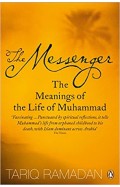Dimensions of Islam
By: Frithjof Schuon
-
Rs 680.00
Due to constant currency fluctuation, prices are subject to change with or without notice.
Frithjof Schuon’s earlier work Understanding Islam has been widely acclaimed for its unique insight into what is perhaps the least understood of the great Religions. It would not be an exaggeration to say that, in the writing of Schuon, Islam has for the first time been presented in all its amplitude and depth as a religion to be studied in its own right. This book brings to light some important but lesser known aspects of Islam and, like Understanding Islam, is written from a predominantly Sufi point of view. One is made to feel that a religion is like a living organism in which all the parts, both inward and outward are intimately related…..there is a continual movement from inward truth to outward or concrete symbol, from centre to circumference and back again to the centre. A striking example of this is to be found in the chapter on the Sufi doctrine of the five Divine Presences.
Of particular interest to Western readers will be the chapters on Christ and on the Virgin Mary, who for Muslims as well as for Christians is the summit of the hierarchy of women. There are also important chapters on the interpretation of the Qur’ān, and on the Prophet Muhammad and his place in the Monotheistic Tradition as a whole. As usual in the author’s writings, the book is rich in references to other religions; to Hinduism, Buddhism and particularly to Christianity.
Frithjof Schuon’s earlier work Understanding Islam has been widely acclaimed for its unique insight into what is perhaps the least understood of the great Religions. It would not be an exaggeration to say that, in the writing of Schuon, Islam has for the first time been presented in all its amplitude and depth as a religion to be studied in its own right. This book brings to light some important but lesser known aspects of Islam and, like Understanding Islam, is written from a predominantly Sufi point of view. One is made to feel that a religion is like a living organism in which all the parts, both inward and outward are intimately related…..there is a continual movement from inward truth to outward or concrete symbol, from centre to circumference and back again to the centre. A striking example of this is to be found in the chapter on the Sufi doctrine of the five Divine Presences.
Of particular interest to Western readers will be the chapters on Christ and on the Virgin Mary, who for Muslims as well as for Christians is the summit of the hierarchy of women. There are also important chapters on the interpretation of the Qur’ān, and on the Prophet Muhammad and his place in the Monotheistic Tradition as a whole. As usual in the author’s writings, the book is rich in references to other religions; to Hinduism, Buddhism and particularly to Christianity.
Prayer Fashions Man: Frithjof Schuon on the Spiritual Life
By: Frithjof Schuon
Rs 950.00 Ex Tax :Rs 950.00
Zubin Mehta: A Musical Journey (An Authorized Biography)
By: VOID - Bakhtiar K. Dadabhoy
Rs 840.00 Rs 1,050.00 Ex Tax :Rs 840.00
Prayer Fashions Man: Frithjof Schuon on the Spiritual Life
By: Frithjof Schuon
Rs 950.00 Ex Tax :Rs 950.00
The Revenge of Geography What the Map Tells Us about Coming Conflicts and the Battle Against Fate
By: Robert D. Kaplan
Rs 4,295.00 Ex Tax :Rs 4,295.00
The Messenger: The Meanings of the Life of Muhammad
By: Tariq Ramadan
Rs 2,595.00 Ex Tax :Rs 2,595.00
Rumi :The Big Red Book The Great Masterpiece Celebrating Mystical Love And Friendship -
By: Coleman Barks
Rs 2,695.00 Ex Tax :Rs 2,695.00
Prayer Fashions Man: Frithjof Schuon on the Spiritual Life
By: Frithjof Schuon
Rs 950.00 Ex Tax :Rs 950.00
The Revenge of Geography What the Map Tells Us about Coming Conflicts and the Battle Against Fate
By: Robert D. Kaplan
Rs 4,295.00 Ex Tax :Rs 4,295.00
No recently viewed books available at the moment.
Zubin Mehta: A Musical Journey (An Authorized Biography)
By: VOID - Bakhtiar K. Dadabhoy
Rs 840.00 Rs 1,050.00 Ex Tax :Rs 840.00
Prayer Fashions Man: Frithjof Schuon on the Spiritual Life
By: Frithjof Schuon
Rs 950.00 Ex Tax :Rs 950.00
Prayer Fashions Man: Frithjof Schuon on the Spiritual Life
By: Frithjof Schuon
Rs 950.00 Ex Tax :Rs 950.00
The Revenge of Geography What the Map Tells Us about Coming Conflicts and the Battle Against Fate
By: Robert D. Kaplan
Rs 4,295.00 Ex Tax :Rs 4,295.00






















-120x187.jpg?q6)














